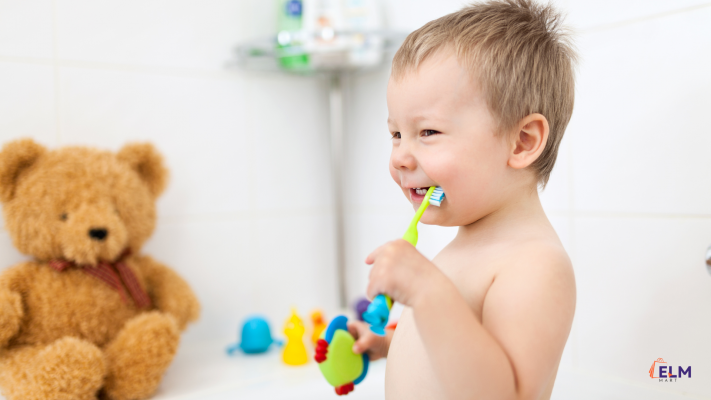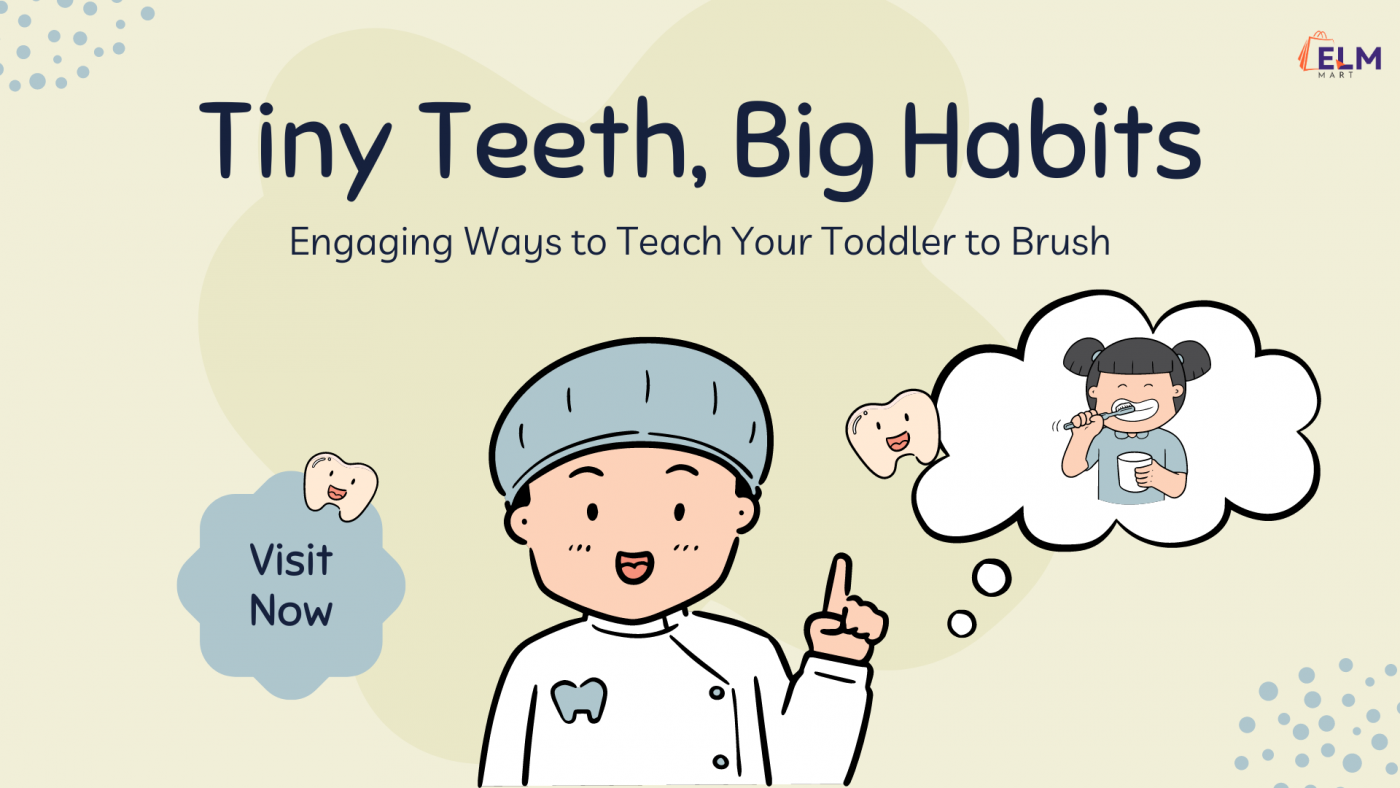Baby Care, Shop's Post
Tiny Teeth, Big Habits: Engaging Ways to Teach Your Toddler to Brush
Teaching a toddler to brush their teeth can be a challenging but crucial part of establishing good dental hygiene habits. At around age two, children are developing their motor skills and understanding of routines, making it an ideal time to introduce them to tooth brushing. By incorporating fun, consistency, and positive reinforcement, you can make brushing a pleasant experience that sets the stage for lifelong dental health.
Here are some effective strategies to help your child learn to brush their teeth with enthusiasm and ease.
-
Make it Fun
- Choose the Right Toothbrush: Let your child pick out a toothbrush with a design or character they like. This could be a favorite superhero, cartoon character, or a toothbrush that lights up.
- Create a Brushing Routine: Incorporate a fun brushing song or rhyme to make the experience enjoyable. You might create a simple song about brushing or find a popular children’s song about dental hygiene.
Why making tooth brushing fun for your toddler is important?
- Positive Association: When brushing teeth is associated with fun and enjoyment, toddlers are more likely to develop a positive attitude towards it. This positive association makes them less resistant and more eager to participate.
- Reduces Resistance: Toddlers often resist routines they find dull or unpleasant. By incorporating playful elements, you can reduce tantrums and reluctance, making brushing a smoother, stress-free experience.
- Encourages Consistency: Fun activities are more likely to become consistent routines. When brushing teeth is an enjoyable part of their day, toddlers are more likely to stick with it regularly, which is key for maintaining good oral hygiene.
- Engages Their Imagination: Using characters, songs, or games can capture your child’s imagination and make the activity more engaging. For example, brushing their teeth can be turned into an adventure where they’re superheroes fighting germs.
- Fosters Independence: Making brushing fun can help build confidence and independence. Toddlers who enjoy the activity are more likely to take the initiative to brush their own teeth, even with minimal assistance.
- Promotes Learning Through Play: Toddlers learn best through play. By incorporating fun elements, you integrate learning with enjoyment, which helps them grasp the importance of dental hygiene while having a good time.
- Strengthens Bonding: Brushing teeth together or creating a playful routine strengthens your bond with your child. Shared activities build trust and make everyday tasks more pleasant for both of you.
-
Set a Routine
- Consistency is Key: Brush your child’s teeth twice a day, ideally after breakfast and before bedtime. Consistency helps establish it as a normal part of their daily routine.
- Use Visual Cues: Create a visual schedule with pictures of brushing teeth to remind your child that it’s time to brush.
-
Use a Mirror when Toddler to Brush
- Visual Feedback: The mirror lets the child see their own mouth and teeth, helping them understand where to brush and how to move the toothbrush effectively.
- Mimicking Actions: Children can observe and imitate your brushing technique, which can improve their own brushing skills. Seeing the correct movements in real-time makes it easier for them to replicate.
- Encourages Engagement: The mirror makes brushing more interactive and fun. It can capture their attention and make them more interested in the process.
- Improves Coordination: Watching themselves in the mirror helps children coordinate their hand movements and brush all areas of their mouth more thoroughly.
- Builds Independence: As they become more comfortable with the process, the mirror helps them practice brushing on their own, boosting their confidence and independence in maintaining oral hygiene.
-
Positive Reinforcement
- Praise and Encouragement: Celebrate their effort and progress with verbal praise. For example, say, “Great job brushing your teeth!” or “You’re such a good brusher!”
- Sticker Charts: Create a sticker chart where they earn a sticker each time they brush. After a certain number of stickers, they can earn a small reward.
-
Lead by Example
- Brush Together: Make brushing a family activity by brushing your teeth together. This shows that it’s a normal, important part of daily life.
- Explain the Importance: As they get older, explain why brushing is important for keeping their teeth healthy and strong, in simple terms they can understand.

These strategies aim to make tooth brushing a positive and enjoyable experience, helping to establish good dental hygiene habits from an early age.
Incorporating these strategies into your child’s tooth brushing routine can transform what might initially seem like a chore into an enjoyable and rewarding part of their day. By making brushing fun, establishing a consistent routine, using interactive techniques, and leading by example, you help your child build positive dental hygiene habits early on. With patience and encouragement, you’ll set the foundation for lifelong oral health and make brushing a natural, happy part of their daily routine.

